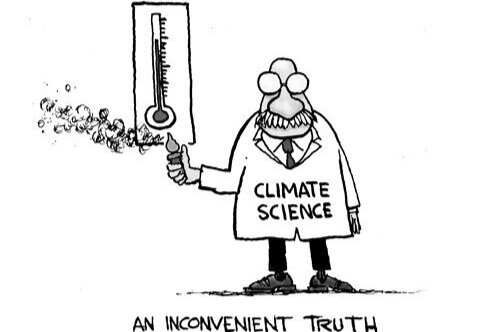Five key messages from the latest IPCC report
The world’s top scientists have published their first update on the physical science of climate change since 2013. The science is becoming more accurate, but not more reassuring. Here there are five takeaways of the report.
Credits to Bokbluster
With few months of delay, 234 world’s top scientists have updated their understanding of how the planet is heating up and what the impacts will be. With a pinch of criticism, the report is already “outdated”. It doesn’t include any 2021 data like how the Atlantic Meridional Overturning Circulation is on the way to collapse in the coming decades. And if you are wondering, that will be bad.
Nonetheless, the “golden book” of climate science deserves a read. Developed by the Intergovernmental Panel on Climate Change (IPCC), a UN-backed initiative, the document is composed of three volumes plus a synthesis report. The first volume of the Sixth Assessment Report (AR6) was released yesterday. It outlines the projected impacts of five emissions scenarios, which range from global net negative to emissions doubling by 2100, compared to current levels. It assesses new scientific knowledge but does not prescribe policy actions. This is the mandate of the second and third volumes, to be delivered in February and March 2022.
The volume published yesterday explains in detail how jamming our atmosphere with greenhouse gases is altering the climate. Although I didn’t have the chance to go through the 4,000 pages of the report yet, I’ll try to sum up its main findings starting from the Summary for Policymakers.
1. We will exceed the 1.5°C warming threshold by 2040
Global warming is accelerating faster than thought. Global temperatures are set to punch through the critical 1.5°C threshold by 2040, under all emissions scenarios considered. This is our make-or-break decade for limiting temperature rise to the most ambitious Paris goal. This is essential for the survival of some vulnerable communities and ecosystems. If we fail to curb emissions in the next decade and reach net-zero CO2 emissions by around 2050, limiting warming to 1.5°C slips out of reach.
2. Humanity is guilty as hell
For the first time the authors unequivocally attribute human-induced climate change as a major driver of more frequent or intense heatwaves, glaciers melting, ocean warming and acidification. Many of these changes are unprecedented in thousands, if not hundreds of thousands of years. The IPCC reports a verdict of climate crimes of humanity.
3. Every region faces increasing changes
Nowhere is safe: in every single corner of the Earth, you will experience the effects of climate change. You could potentially ignore this paragraph if you are considering relocating to Mars. I mean, Sir Bezos and Sir Branson have recently moved few steps in this direction, at a huge CO2 cost for the seven billion people remaining on this planet. So, I suggest not to skip these lines.
Climate models have improved since the last IPCC report. Scientists are now able to understand what global climate impacts will look like in different parts of the world. These include changes to wetness and dryness, to winds, snow and ice, coastal areas and oceans. For example, even at 1.5°C of heating, heavy rain and flooding are projected to intensify in Europe, North America and most regions of Africa and Asia. The IPCC has developed a cool Interactive Atlas to show the projected climate change impacts at regional level.
4. Irreversible tipping points are getting closer
Scientists are increasingly concerned about tipping points – large, fast, and irreversible changes to the climate. For example, the melting of the Antarctic sea ice causes less sunlight to be reflected and so it is warming much faster. It then warms the Antarctic more, which causes the permafrost to thaw and to dry out and be more forest fires in the Boreal region and so on. There is a point where this cycle gets out of control - in the sense that it can't be turned around, even if we lowered the amount of carbon dioxide in the atmosphere. This is a tipping point and would be catastrophic. According to the report, the melting of Antarctic ice sheets could cause sea levels to rise more than a metre by 2100 and 15 metres by 2500.
5. Methane is a new big enemy
For the first time, the IPCC has dedicated an entire chapter to “short-lived climate forcers” such as aerosols, particulate matter and methane. Methane levels are now higher than at any point in the past 800,000 years and are well above the safe limits outlined in the previous IPCC report. Methane has a global warming potential 84 times higher than CO2 over a 20-year period. It causes almost a quarter of global warming. And just to debunk a myth, cows farting is not the main source of methane emissions. Instead, methane is released into the atmosphere from abandoned coal mines, farming and oil and gas operations. A strong and rapid reduction in methane emissions would not only curb global warming but also improve air quality. Still, methane has hardly been on the politician’s agendas and is not included in most countries’ climate pledges.
Humans are the cause and so the solution
Antonio Guterres, secretary-general of the UN, said that the report is “a code red for humanity”. It “must sound a death knell for coal and fossil fuels before they destroy our planet.” The scientists have now spoken, louder and clearer than ever before. Now it is for the politicians to act. Sadly, only few days ago the G20 were unable to agree on the phase out date of coal. Enlightened by the latest IPCC report, are we optimistic enough to believe they will find an agreement in few weeks at COP26?

